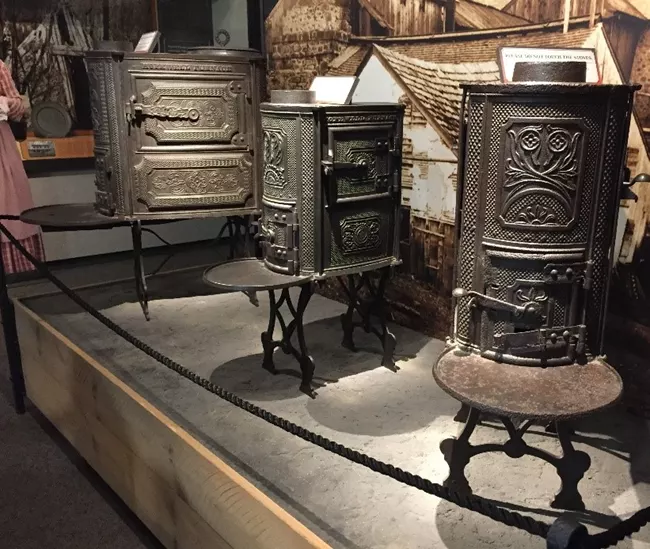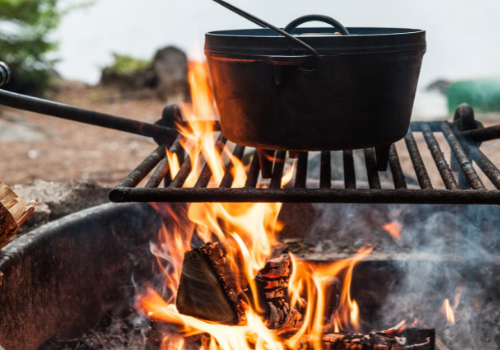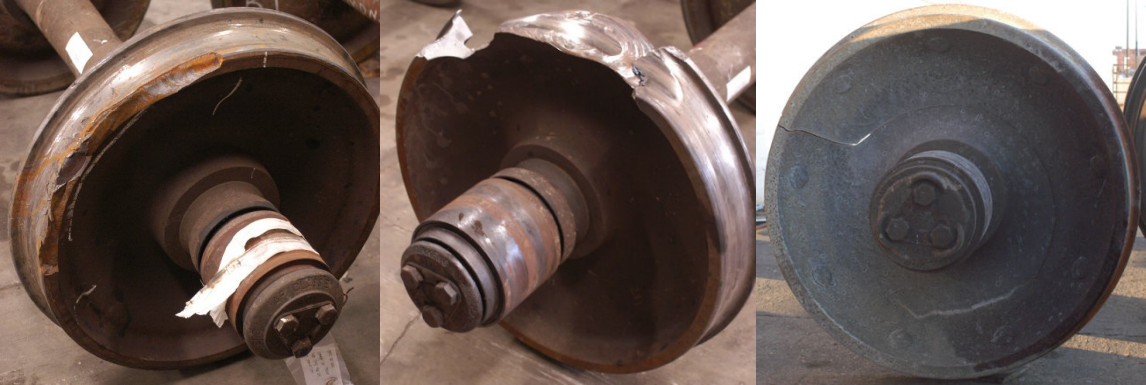20.5 Welding Cast Iron and Cast Steel
David Colameco, M.Ed.
Basics of Welding Cast Iron and Cast Steel
Cast iron and cast steel are like many other casts—such as cast aluminum and even cast stainless steel—in that they tend to be porous and are brittle. As a student, you start by welding low-carbon steel, such as ASTM A36, because it is easy to weld on and is used throughout industry. Then, once you have the techniques down, it is much easier to learn other alloys that are much more difficult to weld, such as stainless steel, chrome-moly, and casts, for example.
In the previous sections we discussed how cleanliness and shielding gas were important for welding stainless steel above and beyond the requirements for mild steel. Cleanliness is also important for working with cast iron and cast steel because many casts are repairs of in-service equipment and they could be covered in or have soaked up dirty elements. If it is an engine block, for example, it may contain oil, greases, fuels, and other hydrocarbons used to lubricate or fuel the machine parts. You may not be able to remove all of the impurities before you weld, but you must do the best that you can.
If you are repairing a casting, it is very important to identify the size of the repair. For instance, if you are repairing a crack, you must determine how long the crack is. First clean the surface of the casting in the area of the crack by removing any paint—but be careful not to smear metal over the crack through mechanical removal of the paint. If doing a repair at home, you can use dye penetrant tests and follow the instructions for timing of the application. The crack is likely longer than you can see with the naked eye, and the dye penetrant might show you a crack that is a few inches longer than it was first observed to be.
The next step is to drill the ends of the cracks to prevent them from spreading any further; this removes the sharp point of the crack and replaces it with a round hole. Structurally speaking, round holes do not allow a stress concentration to form and the stress flows around the hole, instead. When you drill the ends of the hole make sure to countersink it so you can inspect the metal to see if the crack extends below the surface.
It is important to preheat cast iron and cast steel parts due to the brittle nature of casts. Their thermal conductivity (the ability of heat to travel through a material) is lower than that of other materials. Since heat cannot move through cast iron and cast steel quickly, it means the heated metal section will naturally expand while nearby parts will not. This creates thermal stresses and can cause casts to fail by cracking. Slowly and evenly heating up castings to their required preheat temperature prevents cracking. Larger casting generally requires more preheat than smaller ones, and castings with differently sized parts sticking out from the main fabrication require more preheat also. Check the base material’s temperature often and use additional preheat to maintain the temperature as needed.
It is equally important to have all of your welding equipment and materials ready to go right before preheating begins. That way once preheating is completed you are ready to start welding and are not off spending 30 minutes looking for a piece of equipment while the part cools off. Preheating of casts costs money, and any need for additional preheating caused by delays means more money. If you are independently doing repairs, this added cost could cause you to spend more money on a job than you bring in. Instead, bring all of the equipment for welding in place and then begin preheating.
Once the base materials have been prepped, welding should start immediately. However, if the heat of welding reveals new cracks in the casting that you had not previously observed, stop welding and address the crack as if it were an original crack. This will likely mean that the weldment has to cool back down to room temperature. Note that this must be done slowly. Air cooling is too fast for almost all cast irons and cast steels. If you used an oven to heat the cast, place the weldment back into the turned off oven and allow it to cool inside with the thermal insulation of the oven. Welding blankets can also be used to slow the cooling process.
If you are using GTAW as the welding process, you will likely see a lot of junk and dirt floating to the surface of your weld pool. This is normal and you will not be able to remove all of this junk; however, you can add more weld metal in an effort to coax the dirt out and replace it with sound weld metal. There are many good videos available to watch online that show what this dirt looks like and how the welders in those videos handle it.
After you’ve completed the welding repair , it must be slowly cooled. Do this by placing the weldment back in the heating oven (turned off) to allow the oven’s insulation to slow the cooling process, using welding blankets, or, for smaller weldments, burying it in sand.
If you are interested in welding on cast iron, many welders will try welding on old cast iron skillets. Just make sure not to destroy a family’s favorite skillet that has not been used in a while but is still loved. Check yard sales or secondhand stores for used skillets at a reasonable price to try welding.
Uses of Cast Iron and Cast Steel in Industry Today
Casts in general are formed from an older process in which liquid metal is poured into a mold. Originally this process was used before foundries were invented to produce the wrought products that we use today. Therefore you will find a lot of cast iron pieces from historical fabrications or in modern use in the mass production of parts such as pots and pans, wheels, and other simple shapes. Figure 20.29 shows historic cast iron stoves while Figure 20.30 shows a modern cast iron pot.


The railroad industry uses cast wheels in addition to wrought wheels. Figure 20.31 shows images of failed wheels, with the center image showing a characteristic shattering of a cast.

Some structures are made of cast iron. One of the largest cast iron structures in the U.S. is the United States Capitol dome (see Figures 20.32–34). It is more than 8.9 million pounds of cast iron.



Welding Processes Used With Cast Iron and Cast Steel in Industry Today
SMAW, oxy-acetylene welding, GTAW, and GMAW are used to weld cast iron and cast steel. Which process is used will primarily come down to how critical the part is and which process is available.
If working on parts that have been machined, polished, or prepared in a particular way such that they could be damaged by spatter, then GTAW is the process to use. For other parts, SMAW and GMAW will likely be used. If a welding shop primarily repairs casting, then a process will be chosen depending upon the size of the casts and the quality of the repair needed. For casts that need to be repaired for the lowest cost, SMAW and GMAW might be considered over GTAW, which takes a lot more time and is more expensive. If a cast engine block is being welded, then GTAW would likely be chosen because a high-quality weld is critical to the engine’s performance and a failure of the engine could result in injury or loss of life.
Oxy-acetylene welding has historically been used with casts due to its high heat input, which helps maintain the preheat of the cast. However, oxy-acetylene welding is not widely used today and some welding programs spend two weeks out of a ten-week quarter instructing on oxy-acetylene welding only to switch over to oxy-fuel cutting since most welders will need to use the cutting process while fabricating.
Attributions
- Figure 20.29: Three 10-Plate Cast Iron Stoves on display at Hopewell Furnace’s Visitor Center. by U.S. Department of the Interior, National Park Service in the Public Domain; United States government work
- Figure 20.30: Campfire Permits by U.S. Department of Agriculture, Forest Service in the Public Domain; United States government work
- Figure 20.31: Example of Vertical Split Rim, Shattered Rim, and Thermal Crack Failed Wheels by U.S. Department of Transportation, Federal Railroad Administration in the Public Domain; United States government work
- Figure 20.32: Capitol Dome by Architect of the Capitol. in the Public Domain; United States government work.
- Figure 20.33: Capitol Dome Rotunda by Architect of the Capitol. in the Public Domain; United States government work.
- Figure 20.34: Looking straight up in the U.S. Capitol Rotunda by Architect of the Capitol. in the Public Domain; United States government work.
Heat added to a weldment or base materials before welding begins. Preheat is done on thick materials and materials that are colder that the required minimum temperature specified in a WPS.

